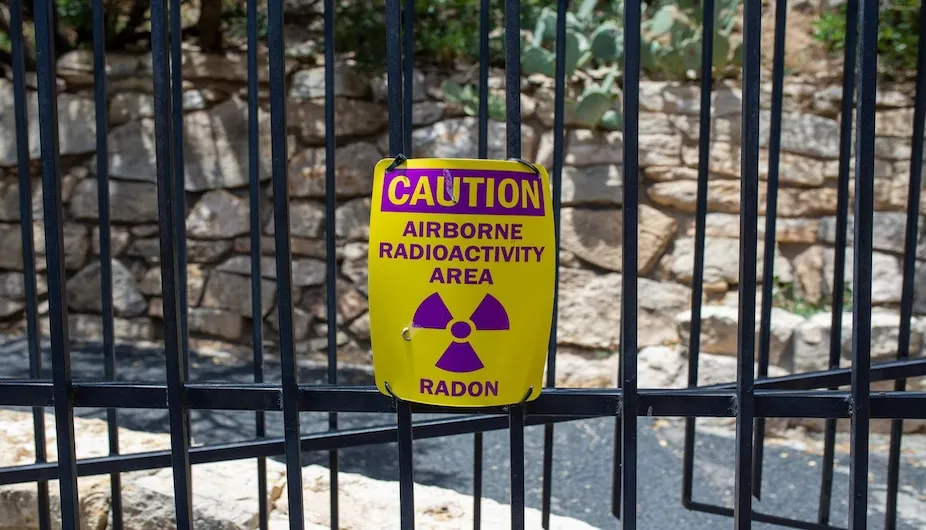An ionizing radiation source is any object or substance that emits ionizing radiation or releases radioactive materials. This can include devices, materials, or environments that produce high-energy particles or electromagnetic waves capable of removing tightly bound electrons from atoms, creating ions.
Natural Radiation Sources
The Earth's population is primarily exposed to natural sources of ionizing radiation, often referred to as natural radiation sources or natural RS. These sources have existed throughout Earth's history, coming from both space (cosmic rays) and naturally occurring radionuclides found in the atmosphere, hydrosphere, and Earth's crust.
Key natural radionuclides include:
- Cosmogenic Radionuclides: Tritium, 3H, Radiocarbon, 14С, Radiophosphorus 32P,
- Terrestrial Radionuclides: 40Potassium, 222Radon, 226Radium, 232Thorium, 235Uranium, 238Uranium.
These sources contribute to the natural radiation background (NRB), which varies across different regions of the Earth. For example, while the average NRB level ranges from 2-4 mSv per year in most areas, it can reach up to 440 mSv per year in places like the black sand beaches of Brazil, India, and China.
As per the United Nations Scientific Committee on the Effects of Atomic Radiation, the global average annual radiation exposure from all radiation sources in the environment makes up about 3.0 mSv/year per person. Of this amount, 80% (~2.4 mSv) is accounted for natural radiation sources and 20 % (~0.6 mSv) - for anthropogenic (man-made) sources. The major part out of 20% is accounted for radiation applied in medical diagnostics.

Man-Made Radiation Sources
Man-made (technogenic) radiation sources are any radiation sources produced by humans. These sources are classified into radionuclide radiation sources and generators of ionizing radiation.
Humans have introduced many artificial radionuclides and mastered the use of atomic energy for various purposes, including medical treatments, energy production, fire detection, and mineral exploration. In addition to artificial radionuclide sources, economic activities often redistribute natural radiation sources, such as during mining and mineral processing.
Key man-made radiation sources include:
- Medical Devices: X-ray machines, CT scanners, and radiation therapy equipment used for diagnostic and therapeutic purposes,
- Industrial Applications: Equipment for radiography, materials testing, and scientific research,
- Nuclear Power Plants: Facilities that generate electricity through nuclear reactions,
- Consumer Products: Certain smoke detectors, luminous watches, and older television sets.
While individual doses from man-made sources can vary widely, they are generally easier to control than those from natural sources. This control is essential for ensuring safety and minimizing exposure. In most cases, these doses are negligible, but occasionally, technogenic exposure can be thousands of times higher than natural radiation.

Categorization of Radiation Sources
Ionizing radiation sources vary based on several factors, including radionuclide type, physical and chemical form, activity, and application, etc. Consequently, the associated risks and necessary radiation safety measures also differ. Categorizing radiation sources helps establish a coordinated approach for their control, safety assurance during use, and procedures for detection and response.
By Form:
- Unsealed Sources: Radioactive materials that are not contained within a solid, impermeable barrier.
- Sealed Sources: Radioactive materials that are encapsulated to prevent the release of radiation.

By Radionuclide Origin and Application:
- Naturally-Occurring Radioactive Materials (NORM): Radioactive materials found in nature,
- Medical (MED): Sources used for diagnostic and therapeutic purposes in healthcare,
- Industrial (IND): Sources used in industrial applications such as for example, radiography and material testing,
- Special Nuclear Materials (SNM): Radioactive materials used for nuclear energy and weapons.
According to the International Atomic Energy Agency (IAEA) Safety Standards, radioactive sources are categorized by their activity levels as follows:
- Category 1: Extremely dangerous to the person,
- Category 2: Very dangerous to the person,
- Category 3: Dangerous to the person,
- Category 4: Unlikely to be dangerous to the person,
- Category 5: Most unlikely to be dangerous to the person.
Understanding the differences between natural and man-made ionizing radiation sources, along with categorizing radiation sources based on their form, origin, application, and activity levels, enables a structured and effective approach to managing them. This approach minimizes risks associated with their use and is essential for effectively managing radiation exposure to protect public health.

